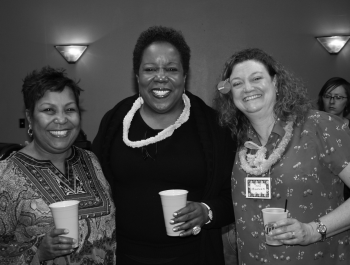Image

Maureen Rude, Executive Director, NeighborWorks Montana
The Challenge: Montana is the fourth largest state in the nation and it has one of the highest rural population rates. Just over half of the residents live at or below the area median income, but funding cuts in 2001 virtually eliminated affordable housing assistance in rural areas.
Montana has one of the highest rural population rates in the country, spread across the fourth largest state in the union. About half of the residents also live at or below the median income, and many are in need of affordable housing assistance. But state and federal funding for such services recently dried up, and the only homeownership programs available for low-income residents were in the large cities, leaving a huge void in the vast rural communities.
NeighborWorks Montana (NWMT) was established in 1998 to support homeownership services across the state through partnerships. The goal was to funnel money raised on a statewide basis through grants and other sources to partners who would deliver homeownership services at the local level. NWMT would serve as an umbrella, thus having a single organization seeking funding rather than numerous agencies competing against each other.
Many organizations took part in the plan, including Rural Development, the U.S. Department of Housing and Urban Development (HUD), the Montana Board of Housing, Fannie Mae, local and regional financial institutions, Indian Tribal Housing organizations, city governments and several nonprofits interested in providing housing services. NeighborWorks America provided a manager to facilitate meetings. Approximately 20 education and counseling agencies began providing services across the state.
Several grants were awarded to facilitate the launch of the new collaboration with service delivery partners around the state. Funds were raised from Rural Development and foundations, which were enthusiastic about contributing to the welfare of the entire state. Initially, the goal was to have one homeowner education class per month in each partner area. Funding was ultimately provided to each organization based on how many classes were held and how many graduated.
In 2005, the Montana Board of Housing (MBOH) successfully applied to become an intermediary for HUD Housing counseling funds. MBOH provided matching funds to support homebuyer education and pre-purchase counseling. Meanwhile, NWMT began building a lending team and providing down payment assistance through a statewide partner network. In 2008, NWMT hired an operations director with significant lending and institutional knowledge to build the lending program and take the partner organization into the future. Grants from HUD and other sources continued to provide the basic funding for the partner organizations.
Everything went smoothly until 2011, when the federal budget eliminated Rural Conservation and Development Organizations, which commonly served rural areas. HUD housing counseling dollars were also zeroed out. As a result, NWMT had to reassess its approach and figure out new strategies for future sustainability.
 To overcome the crisis, NWMT worked with the Montana attorney general’s office to obtain funds from the National Mortgage Settlement, which was established in 2012 to provide relief for distressed homeowners and funding for state and federal governments. Then-attorney general Steve Bullock decided to put the bulk of the funds into counseling services and selected NWMT as the primary partner to distribute them to counseling organizations.
To overcome the crisis, NWMT worked with the Montana attorney general’s office to obtain funds from the National Mortgage Settlement, which was established in 2012 to provide relief for distressed homeowners and funding for state and federal governments. Then-attorney general Steve Bullock decided to put the bulk of the funds into counseling services and selected NWMT as the primary partner to distribute them to counseling organizations.Homebuyer education is now available in every area of the state, either through live classes or a combination of eHome America and one-on-one in person or telephone counseling. Partnering with eHome America, an online homebuyer education program, has allowed NWMT and its collaborators to reach a much larger number of clients by reducing the need for travel. In 2015, the network provided a total of 94 homebuyer and financial education classes, serving 1,186 households. In addition, the network served 741 clients with one-on-one pre-purchase counseling and 270 rental and/or homeless clients. The foreclosure crisis has diminished, but NWMT was able to help meet the needs of over 7,000 Montana residents in need of foreclosure counseling.
NWMT looks very different today than it did in 1998 when it was launched, but at its core, it is still the effective umbrella visualized by its creators, with a solid foundation of experienced staff and strong board support. Building on our initial vision, we learned that we work best through partner organizations and that the state is better served by deploying locals to provide the services most needed in their unique areas. Testing new programs as pilots and knowing when to stop or revamp them is also key.
Finally, this is not a business where we can be complacent as conditions can change drastically. We must continually analyze both our processes and our programs to determine if they continue to stand up under shifting environments.

